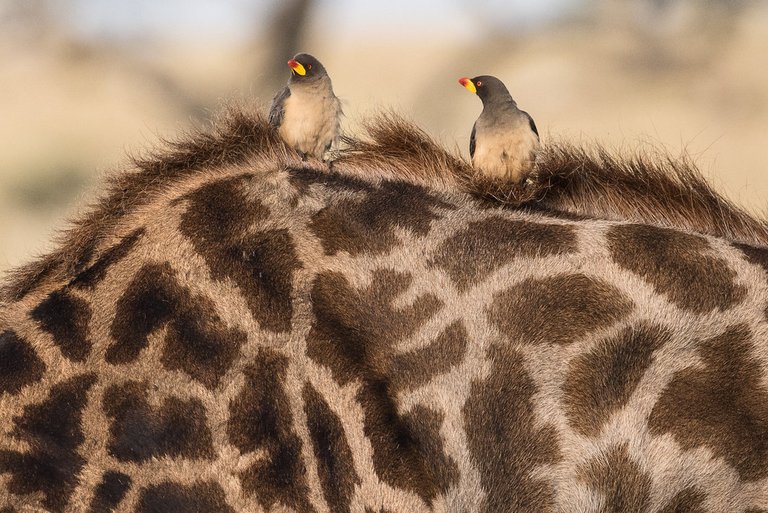Mutualism and Symbiosis; The Lifeblood of Individual Life Forms
Nature is beautiful and but surviving as a specie isn't easy with different mode of survival being displayed by different species. In the wild, there are big animals that are willing to predate on smaller animals and there are tiny insects as well that are able live on other organisms so as to survive. In the ecosystem, species corporate with one another so as to help each other survive.
In the world of organisms, there are a lot of scratch my back I scratch yours and we will call this in biology terms mutualism and it is a relationship where both species benefit from their interaction. A classic example is Insect pollinating flowers and in that way feeding on nectar and pollen.
Acacia trees in Africa are ate by giraffes and they help trim the tree leaves giving it the canopy shape it has but some type of Acacia trees although are covered with thorns, they develop holes in their nodules so ants can live in the nodules. They also feed the ants while the ant help prevent plants from being eating by animals. This is no doubt interesting but neither of these animals know they are this at all, natural selection just took its place.
Another mutualistic relationship is that of a bird called Honeyguides that are interested in eating honey but then they do not have access to this honey because the bees are always there. What the bird does is to call out a honey badger which follows the honeyguide to the hive where it begins to break the hive and eat the bee. It is at this point that the honeyguide is able to take its own share of the honey.
https://s3.animalia.bio/animals/photos/full/original/mission-blue-larvae.webp
nimalia.bio
Still on mutualistic example, the Oxpeckers which feeds on insects and other tiny substances on the body of animals is usually found on four legged big animals. They feed on these insects and in doing so, they keep the big animals safe from insect that could cause injuries and all.
Let's discuss the mission blue butterfly which has been an endangered specie by the United States. I want to discuss the caterpillars and these caterpillars feed only a few weeks of its entire 1 year lifespan as a caterpillar. It stays on a plant for a year but it doesn't stay alone. It has a mutualistic relationship with ants where the caterpillars produces honeydew for the ants and they protect it from wasps that would want to lay eggs on it. While the caterpilar is parasitic to the plant at this form, it becomes a good pollinator when it becomes the mission blue butterfly.
In the ecosystem, different organisms need mutualism and symbiosis to stay alive including we humans who need oxygen from plants while they need carbon dioxide from us to stay alive. Organisms live and survive on one another and we will continue to do this for a very long time.
https://www.sciencedirect.com/topics/agricultural-and-biological-sciences/mutualism
http://www.honeybadger.com/associations.html
https://www.britannica.com/animal/honey-guide
https://www.americanscientist.org/article/watchdogs-of-the
https://www.cam.ac.uk/stories/birds-and-the-badgers
https://www.fws.gov/species/mission-blue-butterfly-icaricia-icarioides-missionensis
https://ucanr.edu/blogs/blogcore/postdetail.cfm?postnum=25463
https://www.nationalgeographic.com/science/article/evolutionary-arms-race-turns-ants-into-babysitters-for-alcon-blue-butterflies

Thanks for your contribution to the STEMsocial community. Feel free to join us on discord to get to know the rest of us!
Please consider delegating to the @stemsocial account (85% of the curation rewards are returned).
Thanks for including @stemsocial as a beneficiary, which gives you stronger support.
Congratulations @busted1! You have completed the following achievement on the Hive blockchain And have been rewarded with New badge(s)
Your next target is to reach 90000 upvotes.
You can view your badges on your board and compare yourself to others in the Ranking
If you no longer want to receive notifications, reply to this comment with the word
STOP♦️ You got 0.01 FELT for sharing high vibes on Hive.
♦️ FELT gifts sponsored by Aquarius Academy school of consciousness.